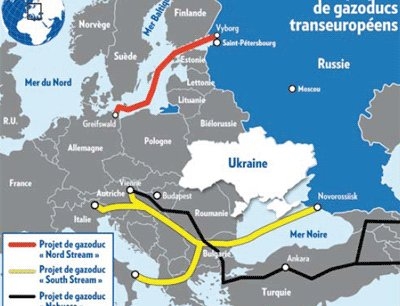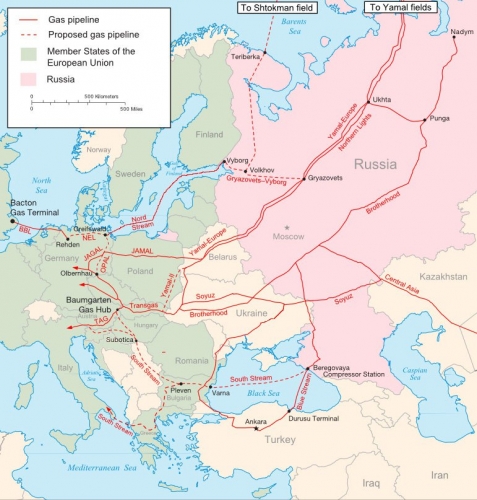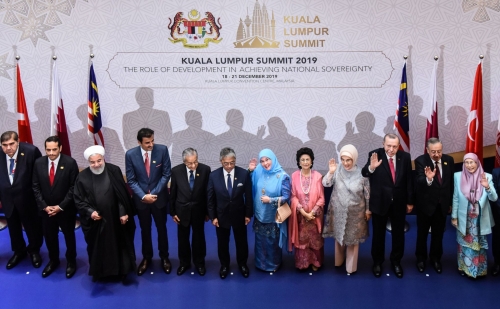Edmund Morgan
American Slavery, American Freedom: The Ordeal of Colonial Virginia
New York: W.W. Norton, 1975
Jill Lepore
The Name of War: King Philip’s War and the Origins of American Identity
New York: Vintage, 1999
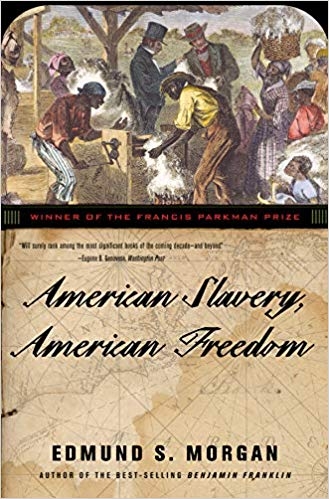
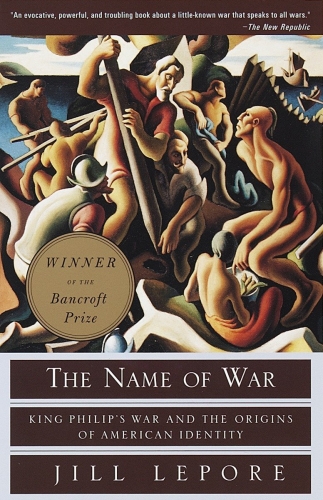
The Dissident Right must take back American history. Conservatives envision our nation’s history as a giant expansion of liberty. Their idea of the founding is bunch of guys getting together to fight for abstract ideas–race and ethnicity played no role in it. America is great because we overcame race and ethnicity. What unites us is our “ideas.”
This view is also shared by most liberals, with the difference that they admit race and ethnicity shaped American history. America’s history is one of overcoming racism on the path to progress.
Leftists believe America was founded on white supremacy, and we must uproot this virus at the core of America to achieve progress. Leftists, unlike conservatives and liberals, believe it is impossible to separate the founders from white supremacy. Leftists don’t see America as fundamentally good, but it can be made good with through subversion.
Many reactionaries condemn America’s founding as a “Judeo-Masonic” plot or an egalitarian horror. America has always been evil and it must be destroyed to bring about the Catholic (or Evropean) imperium. This is an autistic view that many on the Dissident Right have embraced. It may make sense to some Europeans, but it dooms American identitiarians to irrelevance.
The Dissident Right’s view that America was founded by and for whites (and that’s a good thing) is rarely heard. The Left’s view somewhat mirrors ours, but it’s buried under claims that race is a fiction and non-whites actually built this country. The Left also thinks it’s a terrible thing that the Founders wanted a white country.
The history we’re force-fed at school upholds the prevalent liberal view. America was founded on the ideas of equality and liberty (and possibly diversity, too). America is a nation of immigrants. Non-whites helped found this country. Check out Crispus Attucks! Most Americans can tell you more about marginal non-white figures like Harriet Tubman than integral heroes like Andrew Jackson.
The Dissident Right must tell the (correct) identitarian view of the country. America was founded by Anglo and Anglicized white men and is rooted in European traditions and culture. Settlers and conquerors founded America, not “immigrants.” Non-whites were either unimportant or opposed to the founding. There are plenty of heroes for our cause we can find from our past, all of them more important than Harriet Tubman.
One year stands out in our colonial heritage: 1676. This year witnessed Bacon’s Rebellion, a populist revolt against a corrupt elite that coddled racial aliens, and concluded King Philip’s War, a race war that dispelled New Englanders of their integration delusions. The two, largely forgotten conflicts shaped our identity as a white country.
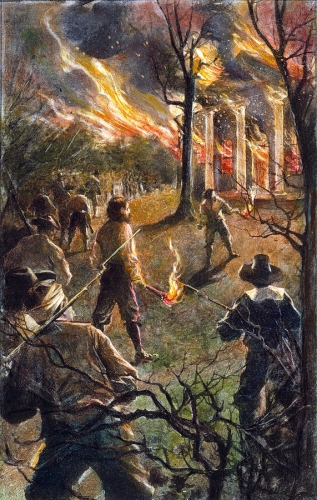 Edmund Morgan’s American Freedom, American Slavery and Jill Lepore’s The Name of War unintentionally provide identitarian accounts of their subjects. Both books won prestigious awards, and liberals continue tout them as classics. Morgan’s book examines the settling of Virginia and how the presence of non-whites influenced republicanism and American identity. Lepore’s book is a cultural and social history of King Philip’s War. Both works are written from a liberal perspective and mainly view whites as bad and non-whites as good. (Lepore’s book less so than Morgan’s.) Each book reveals that racial conflict shaped America.
Edmund Morgan’s American Freedom, American Slavery and Jill Lepore’s The Name of War unintentionally provide identitarian accounts of their subjects. Both books won prestigious awards, and liberals continue tout them as classics. Morgan’s book examines the settling of Virginia and how the presence of non-whites influenced republicanism and American identity. Lepore’s book is a cultural and social history of King Philip’s War. Both works are written from a liberal perspective and mainly view whites as bad and non-whites as good. (Lepore’s book less so than Morgan’s.) Each book reveals that racial conflict shaped America.
The central point of American Freedom, American Slavery is in its title. Morgan argues American freedom was possible due to slavery. He claims whites were able to see themselves as equals because they were all superior to black slaves. The author argues anti-black racism was promoted by the elite to control the white lower classes, a cliché that imagines whites and blacks would rise together to build a more egalitarian society if weren’t for racial manipulation. In contrast to Winthrop Jordan’s Bancroft Prize-winning White Over Black, Morgan insinuates the English colonists initially didn’t view the blacks as much different. The English allied with runaway slaves against the Spanish in raids on Panama, and lower-class whites were not overtly hostile to blacks in Virginia prior to the late seventeenth century. Therefore, Morgan concludes “racism” was an elite invention. It’s no surprise American Freedom, American Slavery is one of Ta-Nehisi Coates’s favorite books.
It’s a preposterous theory debunked by White Over Black, which argues the English always viewed the blacks as an “Other.” Morgan’s view on anti-black racism is also belied by his more honest coverage of English-Indian relations. The English demonized the Spanish for their treatment of Amerindians and initially styled themselves as the Indians’ protectors. This opinion was quickly dashed upon interaction with the native Virginians. The Indians and the English would occasionally cooperate, but both sides viewed each other with suspicion and fear. Some English idealists proposed joint communities with the Virginia Indians; both the English and the Indians rejected that idea. The legendary John Smith proposed a different path of conquering and subduing the Indians à-la Hernan Cortez. Smith saw diplomacy with the tribes as a sham and was disgusted that English leaders would treat Indian chiefs as equals. His view was shared by most colonists.
Plans for integrated communities were dispelled by the Powhatan massacres of 1622. The Powhatan slaughtered nearly 350 Jamestown colonists, sparing neither women nor children. In a cruel twist of fate, George Thorpe, one of the main advocates of integrated communities, was among those murdered. The attack shocked the community of roughly 4000 settlers and made the English view their non-white neighbors as mortal enemies. There was no more entertainment of integrated communities.
Leading military expeditions against the Indians was the easiest way for colonial leaders to gain support from the people. Sir William Berkeley, who served as royal governor from 1642 to 1677, gained popular support through Indian fighting in the 1640s. In old age, however, Berkeley tried to keep the colonists from antagonizing the Indians.
Seventeenth-century Virginia was a place where life was nasty, brutish, and short for most of the population. The colony depended on indentured servants to work the fields, and many men signed up for this daunting labor in the hopes of one day owning their own land. But if they survived the seven or so years of servitude, their options for land were extremely limited. The best land, safe from Indian incursions, was hoarded by the elite. The land further west was less attractive, mostly due to the frequency of Indian attacks. Governor Berkeley ordered that colonists not expand into Indian territory to not antagonize the tribes. This policy was intended to keep the peace (and protect the elite’s interests), but all it did was inflame social tensions.
Berkeley and his allies ruled Virginia in their own interests and kept down their fellow white men. A challenge to this order came from a fellow aristocrat, Sir Nathaniel Bacon. Bacon arrived shortly before 1676 and was appointed to the governor’s council not long after he stepped onto American shores. Bacon saw most of the colony’s elite as greedy upstarts who lived off the public charge. His pedigree was second only to Berkeley in the colony. The young noble settled further away from Jamestown and closer to the Indian tribes. The Indians constantly threatened his property and that of his fellow high-born neighbors. Servants were murdered, and crops were stolen.

Sir William Berkeley
Lower-class freemen in the area advocated for a military excursion against the Indians. Bacon came to lead them in 1676. The young noble—not even 30 at the time—roused popular support for war against their savage neighbors. Berkeley opposed this move, but initially acceded to the request. However, he and his allies eventually felt Bacon exceeded his commission and declared him in rebellion. Open conflict was not immediate as Bacon continued to plead for a legal commission to fight the Indians. In one dramatic episode, Berkeley bared his chest to Bacon and his supporters when they arrived in the colony’s capital, Jamestown. Berkeley dared Bacon to strike him down in the public square. Bacon refused and simply re-emphasized his request for a commission.
Conflict eventually erupted, and Bacon got the upper hand. He forced Berkeley and his forces to flee from Jamestown and nearly gained control of the entire colony. However, Bacon succumbed to dysentery at the rebellion’s peak, and his movement crumbled after his death. Berkeley regained control of the colony with reinforcements from England and promptly took revenge on the rebels. Dozens were executed, and many more suffered property confiscation at the hands of the victorious party.
English authorities were appalled by the reprisals and recalled Berkeley to the homeland. His successors made changes to assuage the disaffected colonists. One of these changes was replacing indentured servants with black slaves. After 1676, black slaves came in far larger numbers to Virginia, and the colony implemented race laws to accommodate the new situation.
Bacon’s Rebellion was a precursor to the American Revolution. Both were populist revolts to defend the interests of the common white man. Like the American Revolution, ordinary colonists rose up against a corrupt elite that cared more about its own interests than that of fellow white men. Colonials rose up in 1775 due in part to the British Empire restricting their movement westward, Virginians rose up in 1676 because colonial authorities restricted their movement westward. Both conflicts were animated by hostility to racial aliens who were protected by the elite, even though they constantly preyed on whites.
Nathaniel Bacon makes for a good Dissident Right hero. He was a charismatic noble who defied his own class to defend the ordinary white man against non-white savages. As Morgan notes, his rebellion was not one for an egalitarian utopia or a radical breach from tradition. It merely sought to advance the interests of the ordinary English landowner.
At the same time Bacon led his Rebellion, New England was in the second year of a war for survival. King Philip’s War was a Wampanoag-led war of extermination against the English colonists of the Northeast. King Philip refers to the Wampanoag sachem (chief) Metacom, whom the colonists dubbed King Philip. The war began after three prominent Wampanoags were hanged for the murder of a Christian Indian who aided the colonists. The event ignited the simmering tensions between Metacom’s Indian confederation and the New Englanders.

The Name of War is not a narrative history of the war but an analysis of its cultural and social effects. You won’t get a good sense of the battles and the military strategy, but the reader will understand how both sides viewed the war, the enemy, and themselves. The war sharpened the identities of both combatants, both of whom saw themselves the opposite of the “Other.”
The war was particularly brutal. The Indians’ goal was to drive the English into the sea by any means necessary. Indians slaughtered hundreds of women and children and relished in the torture of captured colonists. These tortures ranged from flaying to burying captives alive. Lepore recounts how Indians enjoyed burying colonists alive in order to mock their agricultural practices. The Indians made sure to leave grisly mementos for the New Englanders, including mutilated bodies left nude, signaling that the savages were trying to strip the Englishmen of their dignity and identity. (The English colonists saw their clothing as a mark of difference between them and the Indians.) Lapore writes that the hostile Indians particularly targeted marks of English identity. They destroyed churches and ripped up Bibles to show their opinion of the faith the colonists wished to impose on them. They were especially cruel to Indian converts, seeing them as traitors to their native ways.
The war was a rejection of any attempts to mix peoples together, and a racial identity soon emerged among the English colonists. Prior to the war, many of the New Englanders hoped to transform the Indians through Christianity. They primarily saw the Indians as primitives who just needed the Gospel to assimilate to civilization. Some Indians did convert, but most stayed loyal to their own folkways. The war disabused the English colonists of these notions. The Indians were now viewed as unassimilable racial aliens. The colonists realized that Puritan Christianity could not turn Indians into Englishmen—they were too inherently different.
Like the Virginians, they had their own Indian sympathizers. But, unlike in Virginia, they were motivated more by radical Christianity than greed. Roger Williams, the founder of Rhode Island, was a long-time friend to Indians. He dissuaded his fellow colonists from attacking the Narragansetts in 1654 because it would undermine their missionary efforts. The Narragansetts joined the Wampanoags in slaughtering the English 20 years later. Even at the height of the war, Williams pandered to the Indians and tried to negotiate with them. The Indians rejected Williams’s overtures, saying it was impossible to have peace with people who took their land. Williams watched as the Indians he loved burned his city, Providence, to the ground. All his benevolence literally turned to ash at the hands of those he saw as brothers. For the Indians did not see him as a brother.
The war wiped out dozens of English towns and villages and left hundreds of Englishmen dead. The losses were greater on the Indian side. It’s considered America’s bloodiest war per capita. Nearly all of the 80,000 New England colonists were affected by the war, and many were traumatized by it for the rest of their lives.
The war turned in the colonists’ favor when the Mohawks went to war against Metacom’s alliance in 1676. He had hoped to include them in his confederacy, but the Mohawk’s hatred for the Wampanoag won out. The Mohawk attacks forced Metacom’s confederacy into the arms of the colonists, and eventually he was killed by the English in August of 1676. The war petered out with the death of its leader.

Memory of the war initially solidified New Englanders’ hostility toward the Indians. Many had memories of family members gleefully butchered by those they once saw as neighbors. It was agreed the Indians were not to be included the New Englanders’ body politic. Over time, and with the Indians slowly disappearing from the region, New Englanders began to romanticize their former neighbors. A popular 19th-century play, Metamora, portrayed a glorified version of Metacom, and northern audiences often sympathize with his cause. Their ancestors may have fought Metacom, but they now saw him as a hero. However, as Lepore writes, the play did not go over well in regions where savage Indians were not a thing of the past. Like white liberals of today, the New Englanders of the early 1800s idolized the non-whites they didn’t have to live around.
Both books correct false notions of English-Indian relations. The Thanksgiving myth of the pilgrims and Indians coming together to build American society is just a fairy tale we tell children. The image of the peaceful Indian being wiped out by the racist colonist is also a myth. 1676 proved that two fundamentally different societies—sharing neither language, faith, culture, history, or, most importantly, race—could not live peacefully by each other. Only one people could live in the land settled by the colonists, according to both the English and the Indians. Like today, the leaders of that time tried to avoid the inevitable. Some coddled the Indians for profit, others out of a sense of Christian idealism. In the end, war came, and the delusions were erased by blood.
In 1676, the majority of colonists understood that the land was meant for whites. Integrated communities were dangerous, as George Thorpe and Roger Williams learned the hard way. It was better to build a society based on shared culture, language, and race. America’s Founders knew these lessons, and the violent colonial past informed their actions and notions.
Our forefathers did not come to America for refuge. They came to conquer a wilderness that wanted them dead—and they succeeded.



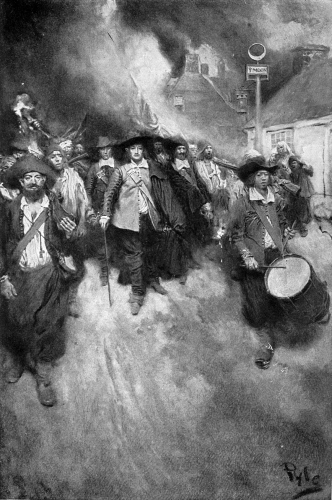

 del.icio.us
del.icio.us
 Digg
Digg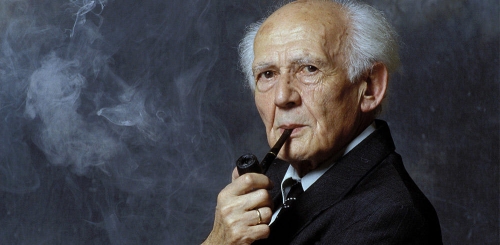
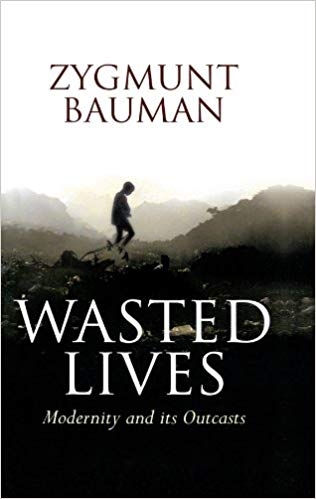 On va relire le sociologue israélo-britannique Zygmunt Bauman, auteur de remarquables essais sur notre postmoderne et zombi mondialisation. Il a bien compris que la clé c’est la peur et son exploitation (on est en 2002) :
On va relire le sociologue israélo-britannique Zygmunt Bauman, auteur de remarquables essais sur notre postmoderne et zombi mondialisation. Il a bien compris que la clé c’est la peur et son exploitation (on est en 2002) :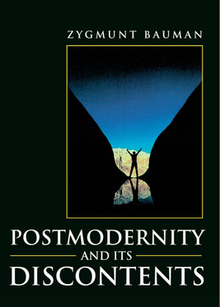 Bauman ici explique pourquoi on croule sous d’horribles et coûteuses voitures informelles. Cela correspond à la paranoïa du « « capitalisme de catastrophe » (Ramonet) :
Bauman ici explique pourquoi on croule sous d’horribles et coûteuses voitures informelles. Cela correspond à la paranoïa du « « capitalisme de catastrophe » (Ramonet) : Il est important de rappeler cela, qu’il s’agisse de Sarkozy-Macron-Hollande, de Bush, May, Clinton-Obama, Merkel et du reste ; l’Etat fasciste-sécuritaire accompagne la dégradation-extinction de l’Etat de droit et de l’État social. L’État renonce à la carotte et a recours à la trique du CRS et au contrôle par des services plus ou moins secrets :
Il est important de rappeler cela, qu’il s’agisse de Sarkozy-Macron-Hollande, de Bush, May, Clinton-Obama, Merkel et du reste ; l’Etat fasciste-sécuritaire accompagne la dégradation-extinction de l’Etat de droit et de l’État social. L’État renonce à la carotte et a recours à la trique du CRS et au contrôle par des services plus ou moins secrets : On a tous vu la nullité brouillonne des forces du désordre à Strasbourg. Mais ce chaos fait partie de la mise en scène, et Bauman vous l’explique :
On a tous vu la nullité brouillonne des forces du désordre à Strasbourg. Mais ce chaos fait partie de la mise en scène, et Bauman vous l’explique :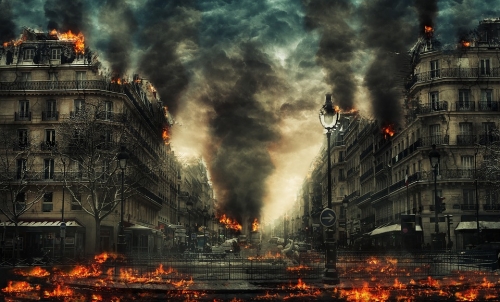

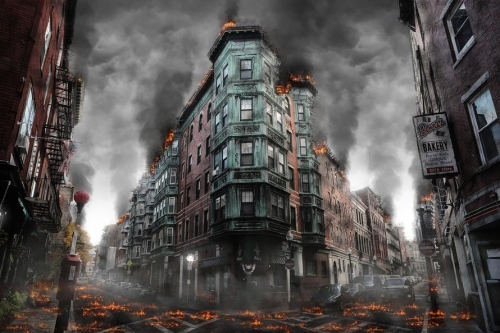



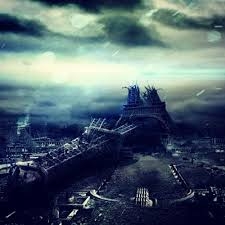

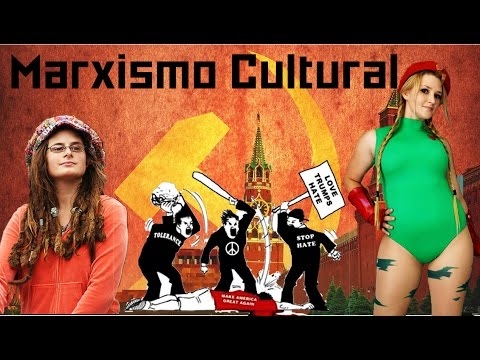



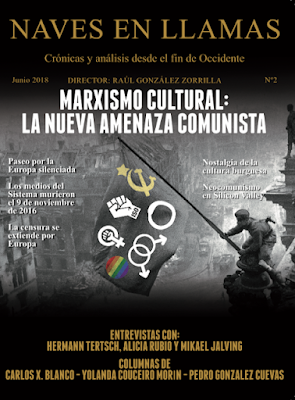
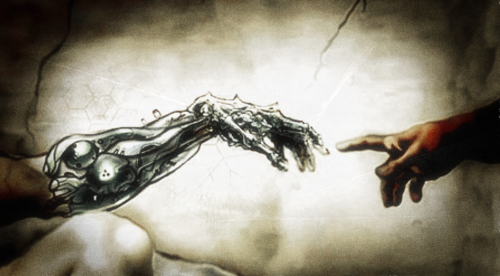







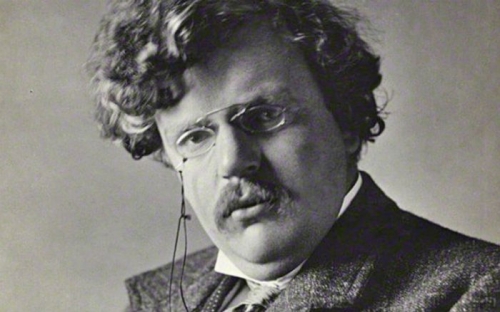

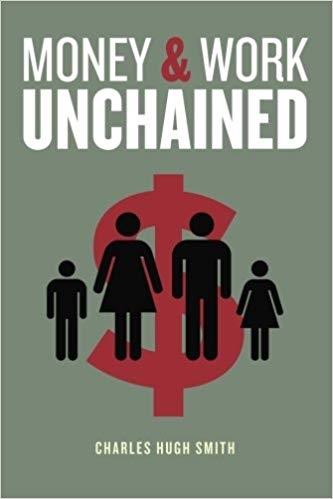



 Dans cette ambitieuse perspective géopolitique, il dénonce bien sûr l’influence du sionisme en Europe et s’inquiète de la prolifération prochaine des lois liberticides. Il consent cependant à ce que l’Europe unifiée et libérée de l’emprise atlantiste protège « un “ petit ” Israël bucolique (frontières décrites par l’ONU) […]. Par contre, la paranoïa biblique d’extrême droite qui rêve du grand Israël jusqu’à l’Euphrate doit être dénoncée et combattue avec vigueur (p. 108) ». Cette approche ne doit pas surprendre. L’auteur a toujours revendiqué la supériorité de l’omnicitoyenneté politique sur les appartenances communautaires linguistiques, religieuses et ethniques. « La citoyenneté euro-soviétique ou grand-européenne doit devenir ce qu’a été la citoyenneté romaine (p. 237). » On comprend mieux pourquoi Alexandre Douguine s’en réclame bien que les deux hommes divergeaient totalement sur le plan spirituel. La République euro-soviétique de Thiriart serait une Fédération de Russie élargie à l’Eurasie septentrionale.
Dans cette ambitieuse perspective géopolitique, il dénonce bien sûr l’influence du sionisme en Europe et s’inquiète de la prolifération prochaine des lois liberticides. Il consent cependant à ce que l’Europe unifiée et libérée de l’emprise atlantiste protège « un “ petit ” Israël bucolique (frontières décrites par l’ONU) […]. Par contre, la paranoïa biblique d’extrême droite qui rêve du grand Israël jusqu’à l’Euphrate doit être dénoncée et combattue avec vigueur (p. 108) ». Cette approche ne doit pas surprendre. L’auteur a toujours revendiqué la supériorité de l’omnicitoyenneté politique sur les appartenances communautaires linguistiques, religieuses et ethniques. « La citoyenneté euro-soviétique ou grand-européenne doit devenir ce qu’a été la citoyenneté romaine (p. 237). » On comprend mieux pourquoi Alexandre Douguine s’en réclame bien que les deux hommes divergeaient totalement sur le plan spirituel. La République euro-soviétique de Thiriart serait une Fédération de Russie élargie à l’Eurasie septentrionale.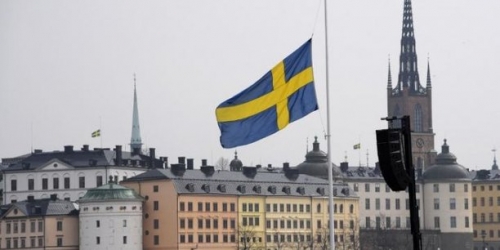






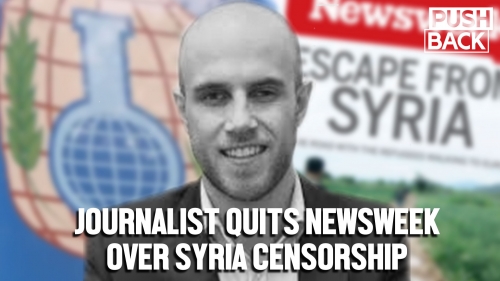




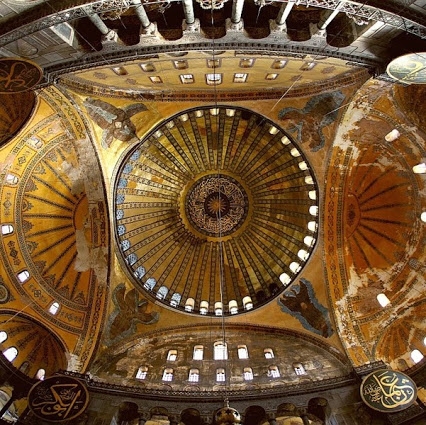
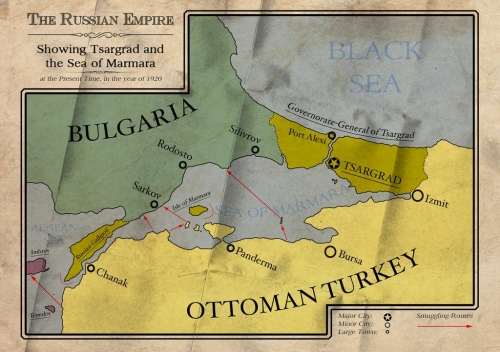
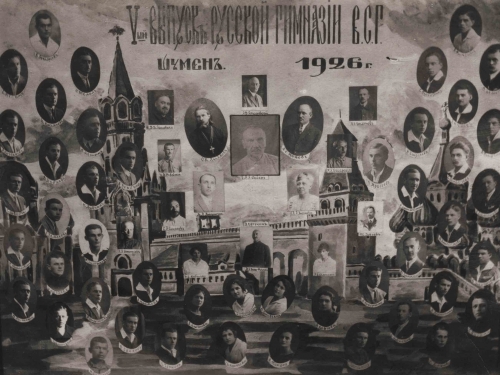
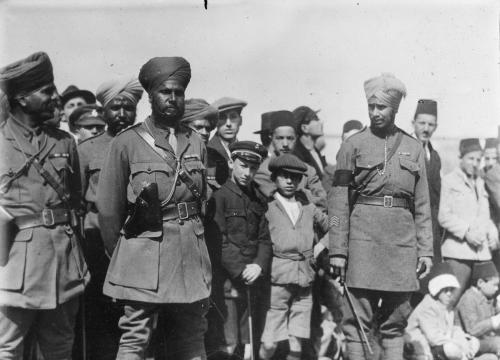
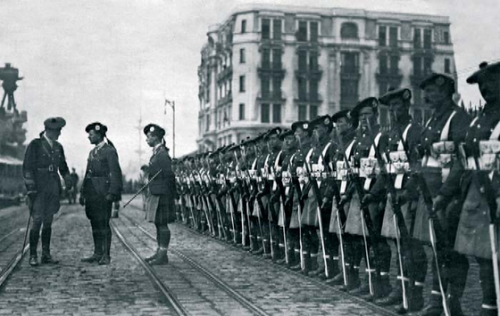
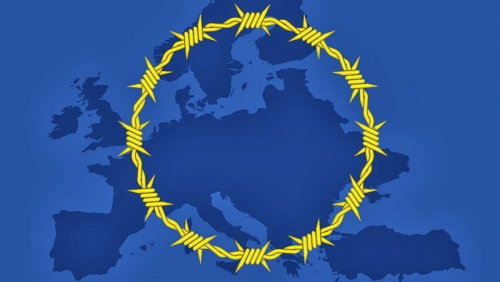

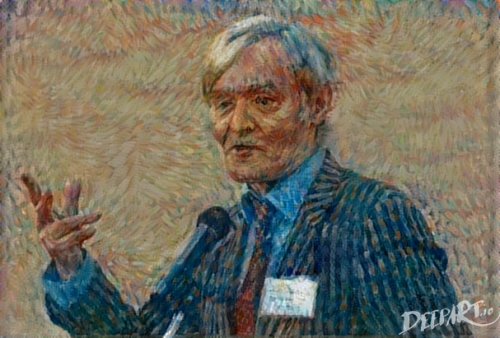
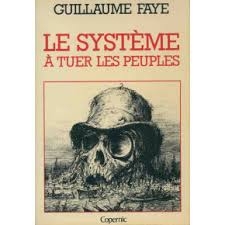 Dentro del GRECE (Groupement de recherche et d’études pour la civilisation européenne – Grupo de Investigación y Estudios para la civilización europea), se dedicó a estudiar con detenimiento la filosofía política -Machiavelo, Hobbes, Hegel, Pareto, Carl Schmitt, Oswald Spengler, Ernst Jünger, Moeller van den Bruck, Heidegger, Arnold Gehlen, Konrad Lorenz, etc.-. También desarrollaría un gran interés por las teorías geopolíticas europeistas de Jean Thiriart. Dueño de un estilo original y de una inteligencia muy lúcida, Faye ocupó un puesto importante en el GRECE y se convirtió en un referente de la Nouvelle Droite. Desde las páginas de Nouvelle École y Eléments puso su pluma al servicio del polo antimodernista del movimiento: por ello sus textos del período se destacan por su duro repudio a las ideas centrales de la Ilustración (y a sus herederos que buscan promoverlas), por su feroz crítica al materialismo y al consumismo burgués, y por sus despiadados ataques contra la tecnocracia. Alain de Benoist, entusiasmado con su ímpetu militante e impresionado con su rigor intelectual, le encomendó en 1974 la dirección de la revista Études et Recherches, la más académica de las publicaciones de la organización.
Dentro del GRECE (Groupement de recherche et d’études pour la civilisation européenne – Grupo de Investigación y Estudios para la civilización europea), se dedicó a estudiar con detenimiento la filosofía política -Machiavelo, Hobbes, Hegel, Pareto, Carl Schmitt, Oswald Spengler, Ernst Jünger, Moeller van den Bruck, Heidegger, Arnold Gehlen, Konrad Lorenz, etc.-. También desarrollaría un gran interés por las teorías geopolíticas europeistas de Jean Thiriart. Dueño de un estilo original y de una inteligencia muy lúcida, Faye ocupó un puesto importante en el GRECE y se convirtió en un referente de la Nouvelle Droite. Desde las páginas de Nouvelle École y Eléments puso su pluma al servicio del polo antimodernista del movimiento: por ello sus textos del período se destacan por su duro repudio a las ideas centrales de la Ilustración (y a sus herederos que buscan promoverlas), por su feroz crítica al materialismo y al consumismo burgués, y por sus despiadados ataques contra la tecnocracia. Alain de Benoist, entusiasmado con su ímpetu militante e impresionado con su rigor intelectual, le encomendó en 1974 la dirección de la revista Études et Recherches, la más académica de las publicaciones de la organización.
 En 1997 Faye reingresa al campo político, reincorporándose al GRECE y uniéndose a Terre et Peuple. Al año siguiente publicará L’Archéofuturisme a través de la editorial L’Ancre, propiedad de Gilles Soulas. El texto denuncia el penoso estado presente de la sociedad europea, y propone aliar el espíritu del futurismo con la tradición ancestral indoeuropea, empleando a la tecnociencia para ultrapasar a la Modernidad en lugar de para consumarla. La obra, además, ataca a la estrategia metapolítica de la Nouvelle Droite, reprochándole el no haberse involucrado más activamente en la lucha electoral, lo que sólo habría perjudicado al pueblo francés. Alain de Benoist recibió con poca simpatía al libro. El discurso racialista y evidentemente en contra de la islamización de Europa de Faye quedó más prístinamente plasmado en La colonisation de l’Europe, publicado en 2000 también por la editorial L’Ancre. El libro señala que el choque de civilizaciones no puede ser resuelto con la integración o la asimilación, sino que la única salida que garantice la persistencia de la raza blanca es la Reconquista, que no sería más que una nueva guerra étnica. La publicación del libro le costó a Faye y a Soulas una onerosa multa, acusados de actuar con la intención de producir literatura que incite a la discriminación y al odio racial. Además, debido a ello, Alain de Benoist expulsó a Faye del GRECE, y acusó al escritor de haber producido una obra delirante y peligrosa.
En 1997 Faye reingresa al campo político, reincorporándose al GRECE y uniéndose a Terre et Peuple. Al año siguiente publicará L’Archéofuturisme a través de la editorial L’Ancre, propiedad de Gilles Soulas. El texto denuncia el penoso estado presente de la sociedad europea, y propone aliar el espíritu del futurismo con la tradición ancestral indoeuropea, empleando a la tecnociencia para ultrapasar a la Modernidad en lugar de para consumarla. La obra, además, ataca a la estrategia metapolítica de la Nouvelle Droite, reprochándole el no haberse involucrado más activamente en la lucha electoral, lo que sólo habría perjudicado al pueblo francés. Alain de Benoist recibió con poca simpatía al libro. El discurso racialista y evidentemente en contra de la islamización de Europa de Faye quedó más prístinamente plasmado en La colonisation de l’Europe, publicado en 2000 también por la editorial L’Ancre. El libro señala que el choque de civilizaciones no puede ser resuelto con la integración o la asimilación, sino que la única salida que garantice la persistencia de la raza blanca es la Reconquista, que no sería más que una nueva guerra étnica. La publicación del libro le costó a Faye y a Soulas una onerosa multa, acusados de actuar con la intención de producir literatura que incite a la discriminación y al odio racial. Además, debido a ello, Alain de Benoist expulsó a Faye del GRECE, y acusó al escritor de haber producido una obra delirante y peligrosa. En 2004 se editan los libros La convergence des catastrophes y Le coup d’état mondial. El primero, que circuló firmado con el seudónimo «Guillaume Corvus», no es más que un resumen del pensamiento de Faye en el que –adaptando las teorías del matemático René Thom a la sociología– alerta que el sistema europeo está en peligro de colapsar debido a que las catástrofes sociales, económicas, demográficas, ecológicas e institucionales pueden confluir en un mismo momento y destruir lo que queda en pie del orden civilizatorio occidental. El otro libro, en cambio, es un análisis sobre el imperialismo estadounidense, al cual repudia, pero destacando que en Norteamérica existe el potencial para contribuir al freno del genocidio blanco (por ello amplía su idea de la Eurosiberia para incluir a los países americanos en una entidad que denominará «Septentrión»). Gracias a estas ideas su pensamiento fue bien acogido por el paleoconservadurismo norteamericano, lo que le permitiría después ser citado como uno de los inspiradores del movimiento Alt Right, gracias a Jared Taylor de American Renaissance.
En 2004 se editan los libros La convergence des catastrophes y Le coup d’état mondial. El primero, que circuló firmado con el seudónimo «Guillaume Corvus», no es más que un resumen del pensamiento de Faye en el que –adaptando las teorías del matemático René Thom a la sociología– alerta que el sistema europeo está en peligro de colapsar debido a que las catástrofes sociales, económicas, demográficas, ecológicas e institucionales pueden confluir en un mismo momento y destruir lo que queda en pie del orden civilizatorio occidental. El otro libro, en cambio, es un análisis sobre el imperialismo estadounidense, al cual repudia, pero destacando que en Norteamérica existe el potencial para contribuir al freno del genocidio blanco (por ello amplía su idea de la Eurosiberia para incluir a los países americanos en una entidad que denominará «Septentrión»). Gracias a estas ideas su pensamiento fue bien acogido por el paleoconservadurismo norteamericano, lo que le permitiría después ser citado como uno de los inspiradores del movimiento Alt Right, gracias a Jared Taylor de American Renaissance.
 Lo cierto es que Delle Chiaie es un personaje central en la acción política patriótica de la Italia de los años 60 y 70, y de las relaciones internacionales de los movimientos nacionalistas de occidente de los 80 y los 90 hasta su regreso a Italia a finales de la centuria para reincorporarse a la política italiana, exonerado de los supuestos crímenes en los que se le incriminaba, como las matanzas de Piazza Fontana de 1969 en Milán, donde murieron 17 personas, o la masacre de Bolonia de 1980, con 85 fallecidos.
Lo cierto es que Delle Chiaie es un personaje central en la acción política patriótica de la Italia de los años 60 y 70, y de las relaciones internacionales de los movimientos nacionalistas de occidente de los 80 y los 90 hasta su regreso a Italia a finales de la centuria para reincorporarse a la política italiana, exonerado de los supuestos crímenes en los que se le incriminaba, como las matanzas de Piazza Fontana de 1969 en Milán, donde murieron 17 personas, o la masacre de Bolonia de 1980, con 85 fallecidos. Su salida de Italia es fruto de su participación en el golpe de estado de Junio Valerio Borguese, en el año 1970, un pseudo golpe de estado que fracasa y que obliga a Delle Chiaie a dejar Italia.
Su salida de Italia es fruto de su participación en el golpe de estado de Junio Valerio Borguese, en el año 1970, un pseudo golpe de estado que fracasa y que obliga a Delle Chiaie a dejar Italia. En 1987 es detenido en Venezuela y trasladado a Italia para ser enjuiciado, siendo absuelto de toda responsabilidad penal por los distintos atentados en los que se le incriminaba en nueve distintos juicios. Años más tarde, ante la Comisión contra el terrorismo que en Italia trató de dilucidar aquellos años de violencia, durante una audiencia de 1997, encabezada por el senador Giovanni Pellegrino, Stefano Delle Chiaie siguió hablando de una «internacional fascista negra» y su esperanza de crear las condiciones de una «revolución internacional». Habló de la Liga Anticomunista Mundial, pero dijo que después de asistir a una reunión en el Paraguay, la había abandonado afirmando que era una fachada de la CIA. Lo único que admitió haber tomado parte en la organización del Nuevo Orden Europeo (NOE).
En 1987 es detenido en Venezuela y trasladado a Italia para ser enjuiciado, siendo absuelto de toda responsabilidad penal por los distintos atentados en los que se le incriminaba en nueve distintos juicios. Años más tarde, ante la Comisión contra el terrorismo que en Italia trató de dilucidar aquellos años de violencia, durante una audiencia de 1997, encabezada por el senador Giovanni Pellegrino, Stefano Delle Chiaie siguió hablando de una «internacional fascista negra» y su esperanza de crear las condiciones de una «revolución internacional». Habló de la Liga Anticomunista Mundial, pero dijo que después de asistir a una reunión en el Paraguay, la había abandonado afirmando que era una fachada de la CIA. Lo único que admitió haber tomado parte en la organización del Nuevo Orden Europeo (NOE).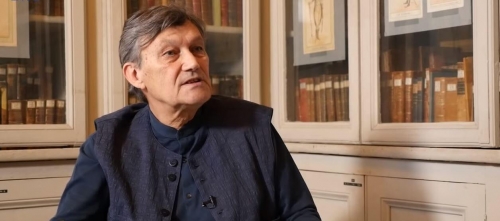
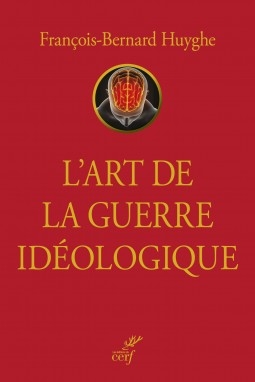 Pourquoi vous intéresser aux idéologies ? Ces dernières ont-elles un vrai impact sur notre société ?
Pourquoi vous intéresser aux idéologies ? Ces dernières ont-elles un vrai impact sur notre société ?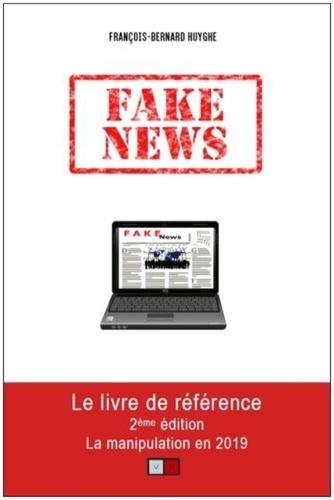 Son progressisme se réclame d’une sorte de sens de l’Histoire allant vers plus de libéralisme économique et politique, de technologies douces, de multilatéralisme, de gouvernance, de performance et d’Europe. Mais, il entend aussi réaliser des « valeurs » sociétales, libertaires : ouverture, innovation, réalisation de soi, diversité, tolérance... Il est bien l’héritier des idées lib-lib qui se sont répandues peu avant ou après la chute de l’URSS et il pourrait être le symptôme d’une fin de cycle intellectuel. Pour le moment, de telles représentations convient plutôt à ceux, disons d’en haut. Elles leur garantissent à la fois la défense de leurs intérêts matériels et la satisfaction ostentatoire de se sentir supérieurs. Moralement face aux obsédés de l’identité et autres autoritaires ou intellectuellement face à ceux qui n’ont « pas compris que le monde a changé » .
Son progressisme se réclame d’une sorte de sens de l’Histoire allant vers plus de libéralisme économique et politique, de technologies douces, de multilatéralisme, de gouvernance, de performance et d’Europe. Mais, il entend aussi réaliser des « valeurs » sociétales, libertaires : ouverture, innovation, réalisation de soi, diversité, tolérance... Il est bien l’héritier des idées lib-lib qui se sont répandues peu avant ou après la chute de l’URSS et il pourrait être le symptôme d’une fin de cycle intellectuel. Pour le moment, de telles représentations convient plutôt à ceux, disons d’en haut. Elles leur garantissent à la fois la défense de leurs intérêts matériels et la satisfaction ostentatoire de se sentir supérieurs. Moralement face aux obsédés de l’identité et autres autoritaires ou intellectuellement face à ceux qui n’ont « pas compris que le monde a changé » .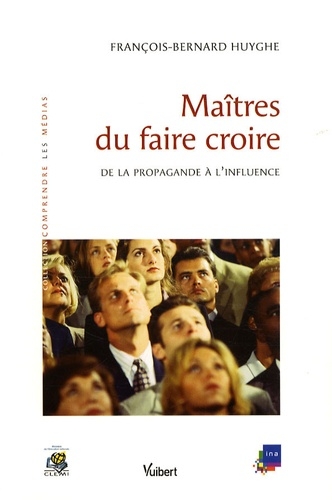 Vous relevez que les idéologies actuelles sont « anti » : antilibéralisme, anti-mondialisme, etc. Notre époque éprouve-t-elle des difficultés à créer de vraies idéologies, comme ont pu l’être le marxisme, le positivisme, le libéralisme ou le structuralisme ?
Vous relevez que les idéologies actuelles sont « anti » : antilibéralisme, anti-mondialisme, etc. Notre époque éprouve-t-elle des difficultés à créer de vraies idéologies, comme ont pu l’être le marxisme, le positivisme, le libéralisme ou le structuralisme ?

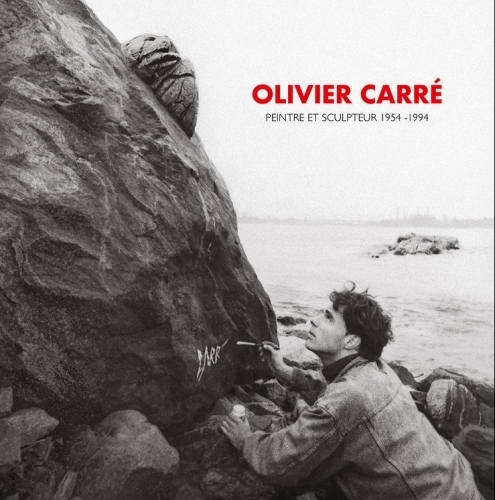

 Une philosophie exigeante et ardue sourd de son œuvre, qu’aucun concept ne peut réduire tant ses tableaux étaient des incitations et non de quelconques solutions données à des problèmes qu’il aurait nettement formulés. Son Athéna nucléaire tout autant que quelques portraits de commandes privées montrent une expression de l’humain perçu comme une liberté à conquérir, une liberté qui doit être refusée si elle n’est qu’une permission donnée par d’autres, par la société, par quelques individus députés à cette fonction, ou par le monarque même ; la liberté telle que la comprenait esthétiquement Carré n’est pas même envisagée comme soumise à une volonté consciente, ni dépendante de la réalisation d’un projet calculé ou d’ordre politique ; elle doit sourdre de l’action, sortir d’elle comme sa principale conquête, quel que soit l’objectif pratique qui est visé. Le rôle social des individus, pour lui, importait peu ; seul l’attirait leur capacité à l’action novatrice et à la mise en œuvre d’une forme nouvelle et créatrice. Autant dire que, pour l’essentiel, Carré ne voyait autour de lui que des esclaves sans grande consistance, et s’amusait de leurs ballets. Il haïssait, pour les mêmes raisons, le circuit des galeristes et des critiques d’art.
Une philosophie exigeante et ardue sourd de son œuvre, qu’aucun concept ne peut réduire tant ses tableaux étaient des incitations et non de quelconques solutions données à des problèmes qu’il aurait nettement formulés. Son Athéna nucléaire tout autant que quelques portraits de commandes privées montrent une expression de l’humain perçu comme une liberté à conquérir, une liberté qui doit être refusée si elle n’est qu’une permission donnée par d’autres, par la société, par quelques individus députés à cette fonction, ou par le monarque même ; la liberté telle que la comprenait esthétiquement Carré n’est pas même envisagée comme soumise à une volonté consciente, ni dépendante de la réalisation d’un projet calculé ou d’ordre politique ; elle doit sourdre de l’action, sortir d’elle comme sa principale conquête, quel que soit l’objectif pratique qui est visé. Le rôle social des individus, pour lui, importait peu ; seul l’attirait leur capacité à l’action novatrice et à la mise en œuvre d’une forme nouvelle et créatrice. Autant dire que, pour l’essentiel, Carré ne voyait autour de lui que des esclaves sans grande consistance, et s’amusait de leurs ballets. Il haïssait, pour les mêmes raisons, le circuit des galeristes et des critiques d’art.
 De quelque bord qu’on la prenne, l’époque se pâme devant les revendications. Mais elles sont toutes d’essence technique et attendent les projets ou les entreprises qui les mettent en œuvre et tentent de les satisfaire. Carré, quant à lui, construisait sa peinture comme un événement capable de regarder son spectateur depuis l’avenir. La négation déréalisante du présent et l’affirmation péremptoire d’un autre monde possible avaient chez lui, quitte à prendre la forme d’une provocation, la même vocation à la disponibilité, la même ouverture vers l’exigence de devenir. Son art ne revendiquait rien d’objectivable. Il traduisait, poussée à ses limites extrêmes, la conscience strictement poétique et généreuse que l’artiste n’a pas à nommer la réalité des choses mais à désigner l’étrangeté qu’elles recèlent, l’inaccompli qu’elles révèlent. L’énoncé conceptuel relève de la raison, qui peut opposer des thèses et leurs contraires puisqu’elle les élabore elle-même ; les facultés propres à un créateur comme Carré ont une autre vocation : lever le voile des vérités juvéniles, ne jamais en compromettre le mystère, ni interrompre la complexité du monde, attiser le feu chaque fois que possible, montrer le geste et habiter la foudre. Sa demeure était l’éclair.
De quelque bord qu’on la prenne, l’époque se pâme devant les revendications. Mais elles sont toutes d’essence technique et attendent les projets ou les entreprises qui les mettent en œuvre et tentent de les satisfaire. Carré, quant à lui, construisait sa peinture comme un événement capable de regarder son spectateur depuis l’avenir. La négation déréalisante du présent et l’affirmation péremptoire d’un autre monde possible avaient chez lui, quitte à prendre la forme d’une provocation, la même vocation à la disponibilité, la même ouverture vers l’exigence de devenir. Son art ne revendiquait rien d’objectivable. Il traduisait, poussée à ses limites extrêmes, la conscience strictement poétique et généreuse que l’artiste n’a pas à nommer la réalité des choses mais à désigner l’étrangeté qu’elles recèlent, l’inaccompli qu’elles révèlent. L’énoncé conceptuel relève de la raison, qui peut opposer des thèses et leurs contraires puisqu’elle les élabore elle-même ; les facultés propres à un créateur comme Carré ont une autre vocation : lever le voile des vérités juvéniles, ne jamais en compromettre le mystère, ni interrompre la complexité du monde, attiser le feu chaque fois que possible, montrer le geste et habiter la foudre. Sa demeure était l’éclair.



